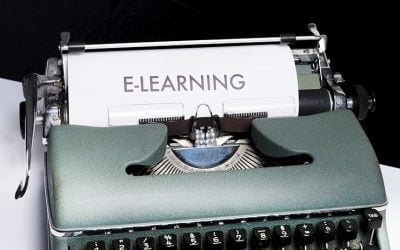Blog
Stay up-to-date on the latest Higher Education, K-12 and Curriculum Design content.
Recent Blogs
New Tech: Follow These 5 Methods When Selling Educational Products to School Districts
Districts desire products aligned with standards. Thus, schools demand products to integrate with their learning platforms. Instructors need products that address learner variability and other student needs. Also, these products must be easy to use. Yet, districts cannot afford to invest in technology that teachers do not use. Often, teachers do not have the time and skills to add new tools. So, new tech often gathers dust in storage closets. Providers can increase educators’ adoption rates by ensuring their products support these five methods.
Lynsey Peterson Appointed to CEO for A Pass Educational Group, LLC
ass Educational Group, LLC, a leader in designing instruction, creating assessments, and building localized content for K-12 and higher educational markets, is pleased to announce the confirmation of Lynsey Peterson as the CEO of A Pass Educational Group, LLC (A Pass). Previously, Peterson served as the Co-CEO and Integrator with Andrew Pass as the other Co-CEO and Visionary. Andrew Pass will continue to be involved with A Pass as the Founder and Visionary, moving to a thought-leadership role, motivated by the many intersections of education and technology.
The 4 Top Considerations When Launching Online College Programs
With the growth of online learning, many colleges are now taking steps to build online programs. Even before the pandemic, face-to-face attendance was decreasing. Meanwhile, the enrollment for online courses indicated a positive gain. Yet again, college enrollment has dropped. Some causes have been students dropping out because of mental stress. High tuition costs create another barrier for students not to enroll in a college program because they fear student loan debt. Higher-ed leaders can review these 4 critical considerations when creating online college programs.
Competency-Based Education (CBE): What Supports Can K-12 Providers Supply?
Publishers can give schools various digital tools that support competency-based education (CBE). But, districts may put off buying a CBE curriculum as they are overwhelmed by product choices. So, publishers can help school districts by making and supporting quality products. Read about the products and supports publishers should prioritize for schools for competency-based education.
NCLEX 2020-2023 Test Plan: The Current Changes
Nursing continues to be a vital profession globally. From pandemics to wars to everyday health, nurses help direct, support, and review the health of everyone, for humanity. An important step for any nurse is licensure. To obtain this license, current and future nursing professionals must pass the NCLEX test. The assessment determines the ability level of RNs and LPN/LVNs. The National Council of State Boards of Nursing (NCSBN) develops the NCLEX and updates its tests every 3 years. The revisions improve the passing standard and ensure nursing knowledge meets current standards, advancements, and future NCSBN goals.
Textbooks: The Process and Fight for School District Adoption
Publishers now face new barriers when selling textbooks. The needs of the teachers and students are at risk unless providers can make flexible, adaptable, and scalable resources. Florida’s rejection of math textbooks for SEL and Common Core standards brings providers new challenges. Publishers may face some of these challenges.
College Courses: 5 Elements to Include for First Year Students
Students enter college from different backgrounds and situations. They might be fully college-ready; meanwhile, others need help. Besides that, college students might not know how to effectively study and attend classes. Thus, colleges have created first-year courses to help guide these students. The What Works Intervention Report produced by the Department of Education shows that students who attend first-year courses did better in college. With more online learning, first-year college courses become a valuable tool for retention and college-career guidance. They can be embedded in core courses like biology and offer various components such as socialization and learning support. Higher-ed leaders can include these five elements for these first-year college courses.
Accelerating Diverse Students’ Learning Through Translated and Illustrated Glossary Resources
This webinar will highlight the processes of development and implementation of translated and illustrated glossaries for use in assessments and instruction. These resources are designed to meet diverse students’ language-related access needs and preferences and provide fair and equitable assessment content.
Subject Matter Experts: Developing Expectations for Course Development
Subject Matter Experts (SMEs), the oracles of knowledge, provide the expertise for curriculum and course development. They know the subject, perhaps taught it, made a course on their own before, or worked in an industry for many, many years. When developing the content, leaders, instructional designers (IDs), and other team members rely on them to ensure the content moves in the best direction; they review if the content is reliable. Yet, the curriculum development process may lack clarity. Team members may not know their role or not meet the expectations. Therefore, leaders should understand these situations when directing SMEs when developing courses.
6 Steps for Publishers When Building the Curriculum Process
Making a robust curriculum is complex. Without effective processes, learners lack structure and guidance that makes optimal learning. Besides that, schools cannot effectively measure results. Moreover, tomorrow’s curriculum must connect to various types of learning, such as online courses. Content creators can quickly lose focus. Therefore, leaders can utilize the following six steps for the curriculum process.
5 Powerful Methods for Higher-Ed Leaders to Address Mental Health for College Students
Sixty percent of prospective college students say mental health services are very important when deciding the school to attend. Before the pandemic, that same outlook was only shared half that amount by students. With this issue, increasing mental health disorders affect students’ academic achievement. Therefore, colleges and universities need to invest in, advocate for, and address the mental health needs of college students. Addressing mental health helps increase student outcomes, raise enrollment and retention rates, prevent suicide, and meet a school’s mission goals and economic needs. Higher-ed leaders consider the following five strategies to improve mental health for both students and institutions.
K-12 School: How Publishers and Providers Can Address the New Virtual Continuum
The pandemic has opened various pathways for K-12 students to learn. Savvy providers think differently about the digital tools they offer schools. Publishers give districts digital solutions for different scenarios students face. Also, leaders create equity by meeting the student where they are in their learning journey. Publishing leaders can create materials to supply these virtual platforms, giving every student an equal opportunity for K-12 schools.












